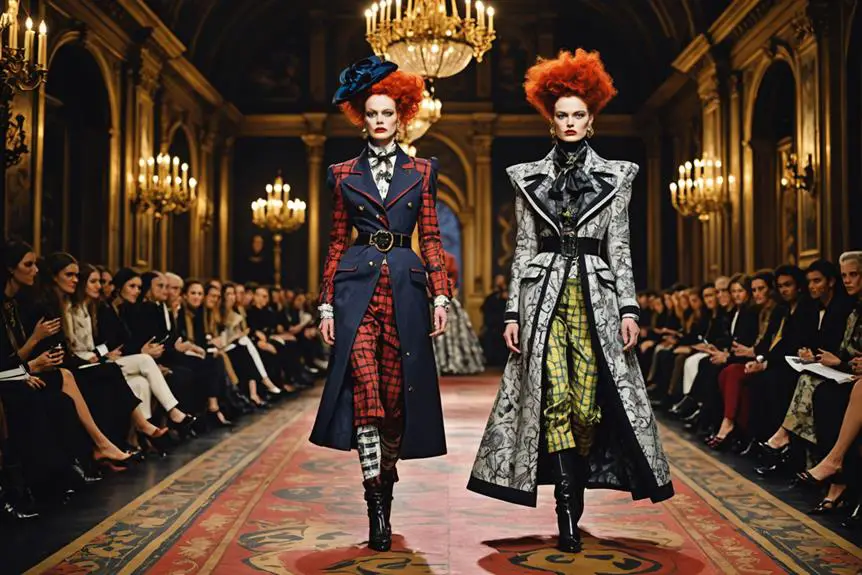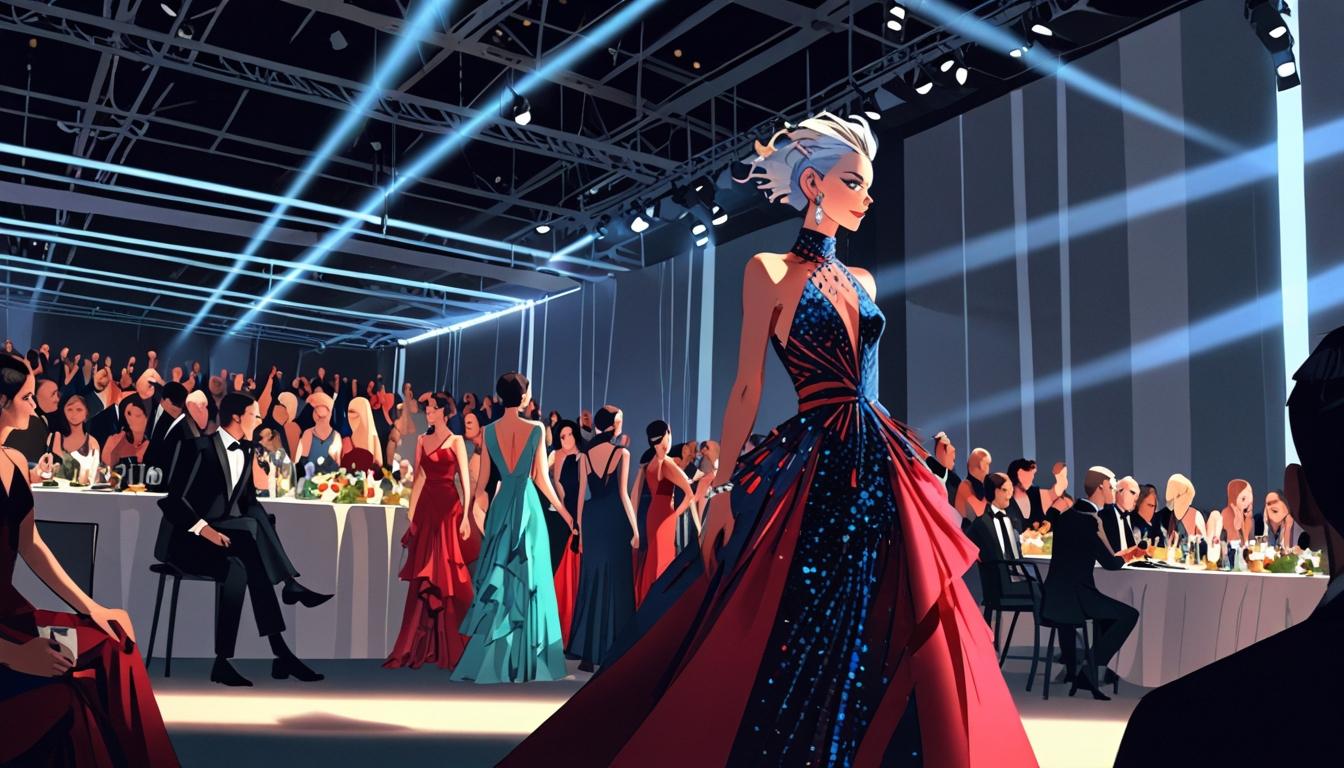You might think that the House of Vivienne Westwood is solely defined by its founder's outrageous designs, but that's just scratching the surface. As you explore the evolution of this iconic label, you'll uncover how its designers have infused punk aesthetics with contemporary relevance while embracing sustainability. The partnership between Westwood and Kronthaler not only honors tradition but also pushes boundaries in ethical fashion. What does this mean for future designers stepping into this legacy? The answer could reshape your understanding of modern fashion's trajectory.
The Visionary Beginnings
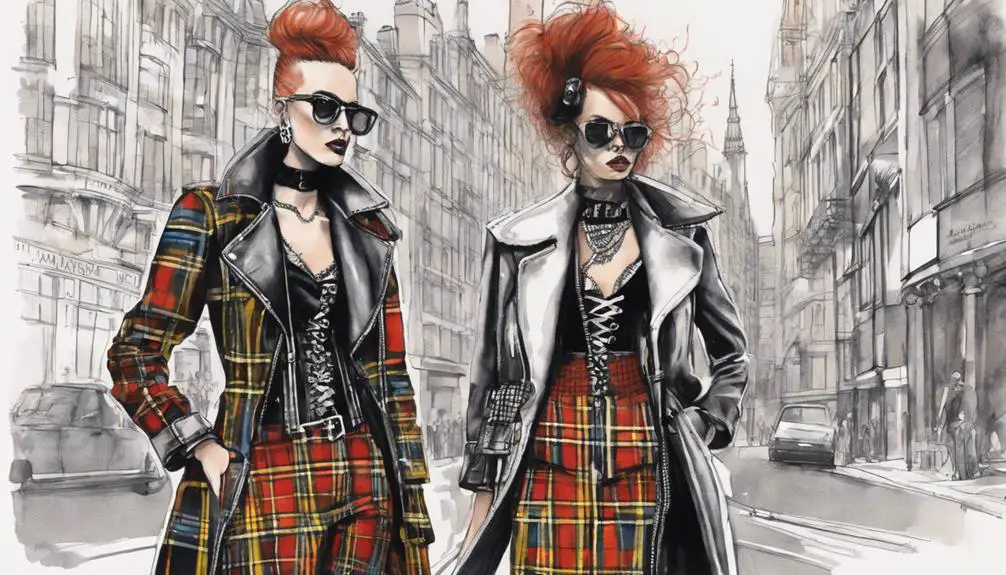
The revolutionary spirit of the 1970s ignited Vivienne Westwood's journey in fashion, setting the stage for a brand that would challenge norms and inspire generations. When she opened her first boutique, Let It Rock, in 1971, it quickly became a cornerstone of London's burgeoning punk fashion scene. In 1974, the boutique transformed into Sex, coinciding with the rise of the iconic Sex Pistols, whose raw energy and anti-establishment ethos perfectly aligned with Westwood's vision.
Her collections featured provocative clothing that not only pushed societal boundaries but also redefined what fashion could represent. Collaborating closely with Malcolm McLaren, Westwood blended music and fashion in revolutionary ways, making a bold declaration that resonated deeply with the youth of the time. Historical influences permeated her designs, weaving elements from the past into a fresh, audacious narrative.
One of her most notable early collections, the Pirate Collection launched in 1981, marked a pivotal moment in her career, showcasing her unique aesthetic on the catwalk. This collection exemplified not just her craftsmanship but also her commitment to creating pieces that told stories. Each garment was a reflection of her ability to merge history with modernity, creating fashion that was both wearable and conceptually rich.
In these visionary beginnings, Vivienne Westwood carved out a space for herself in the fashion world, paving the way for future collections that would continue to challenge and inspire.
Iconic Collections and Aesthetics
Vivienne Westwood's iconic collections have consistently pushed the boundaries of fashion, blending historical influences with contemporary themes. From her groundbreaking Pirate Collection launched in 1981, which marked her first official catwalk show, you can see how she defined an early aesthetic with loose-bottomed trousers and oversized shirts. This collection set the stage for her future works, showcasing her unique approach to style. The evolution of Westwood's designs can be traced through the different logos and tags that signify her vintage pieces, as they reflect the changing aesthetics of her collections over the decades.
The Anglomania collection in Fall 1993 took things further, featuring bold 13-inch platform shoes that challenged traditional fashion norms. This collection captured the essence of Westwood's rebellious nature, a hallmark of her designs that often draws from punk influences. The Witches Collection (Autumn-Winter 1983/84) continued this trend, introducing asymmetric silhouettes that emphasized the spirit of the punk movement, creating a striking visual impact.
In addition to her punk roots, Westwood's Harris Tweed Collection beautifully merges traditional craftsmanship with modern aesthetics, showcasing her ability to reinvent classic styles. This collection exemplifies her skill in drawing from Savile Row tailoring while infusing it with a punk edge.
Collaboration and Influence
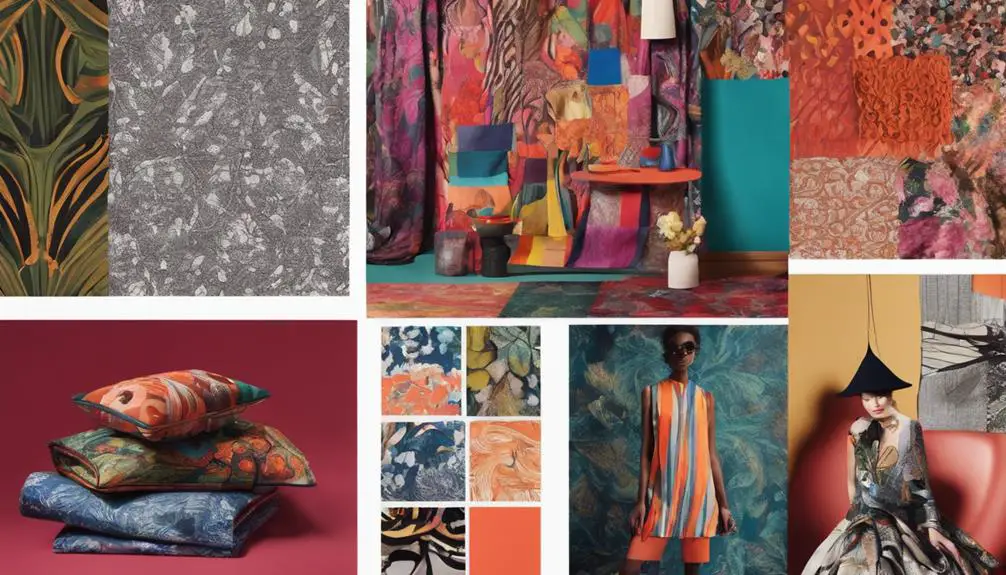
While collaborating with influential figures like Malcolm McLaren in the 1970s, Vivienne Westwood shaped the punk aesthetic that became synonymous with her early collections. This collaboration not only defined a rebellious style but also marked a pivotal moment in fashion history, pushing boundaries and challenging norms. Westwood's innate ability to blend art with fashion sparked a movement that inspired countless contemporary designers who continue to draw from her innovative techniques, as evidenced by her iconic boutique Let It Rock which became central to the punk movement.
In the late 1980s, Andreas Kronthaler entered Westwood's world, becoming a significant collaborator and eventually her husband. His influence led to the rebranding of the Gold Label in 2016, now known as Andreas Kronthaler for Vivienne Westwood. This partnership showcased the importance of collaboration in the creative process, allowing both designers to bring unique perspectives to their collections.
Final adjustments before runway shows often involved a dynamic team, including stylist Sabina Schreder, reflecting Westwood's commitment to collaboration. Beyond fashion, her initiatives, such as partnerships with The Rug Company and the Made in Kenya project, highlight her dedication to ethical fashion and support for local artisans, further expanding her influence.
Westwood's designs resonate deeply in today's fashion landscape, with her punk roots inspiring a new generation of designers. As they embrace her daring spirit, they're ensuring that her legacy continues to thrive and evolve, proving that collaboration is essential for creativity and innovation in the ever-changing world of fashion.
Sustainable Practices in Fashion
Sustainable practices in fashion are more essential than ever, and Vivienne Westwood has been a pioneering force in this movement. By embracing a "Make Do and Mend" ethos, her "Do It Yourself" collection encourages you to rethink your relationship with clothing, promoting sustainability and reducing waste. This commitment to the environment reflects a broader trend in ethical fashion, where quality clothing takes precedence over fast fashion's fleeting trends. Much like chemical-free farming, which promotes natural growth processes and ecological balance, Westwood's approach champions a harmonious relationship with our planet.
Westwood's "Chaos Point" collection shines a light on ecological crises while celebrating childhood innocence, merging fashion with environmental awareness and advocacy. You'll find that her designs don't just look good; they tell important stories about our planet and its future. Through initiatives like the Made in Kenya project, Westwood collaborates with local artisans, ensuring that her accessories support local economies and embody ethical fashion principles.
This dedication to sourcing materials and labor responsibly highlights a revitalizing shift in consumerism, urging you to buy less, choose well, and make it last. By prioritizing quality over quantity, Vivienne Westwood champions a sustainable approach that resonates with conscientious consumers. It's an exciting time in fashion, where the commitment to sustainability isn't just a trend, but a lifestyle choice that empowers you to make informed decisions. So, as you explore your wardrobe, consider how embracing these sustainable practices can impact not only your style but also the world around you.
The Future of the House
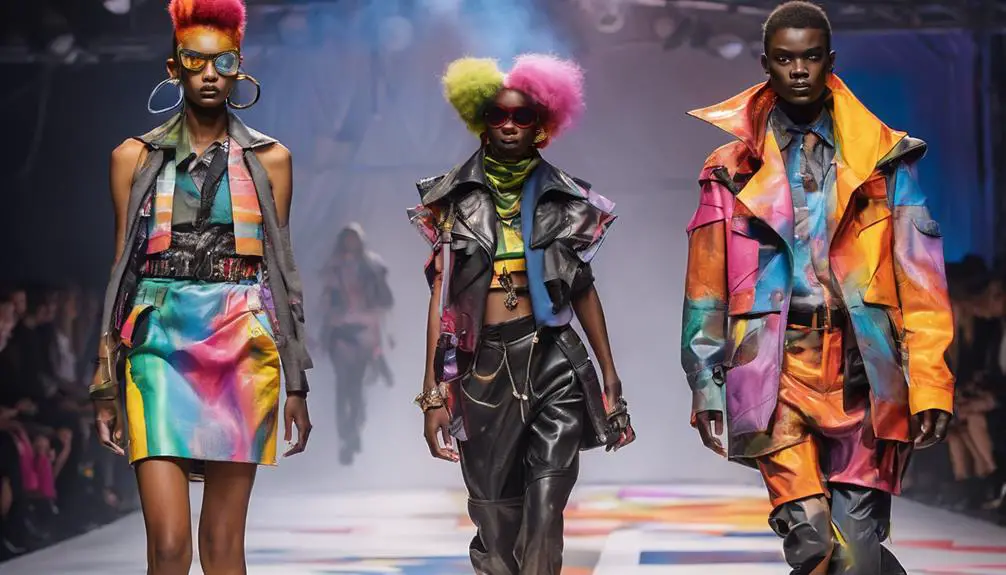
The future of the House of Vivienne Westwood is poised to embrace both its rich heritage and the evolving landscape of fashion. With Andreas Kronthaler at the helm, who has been a loyal collaborator and partner for nearly three decades, the brand is set to continue its legacy while honoring Vivienne's vision. Kronthaler's creative direction promises to blend the iconic punk aesthetics that define the house with modern interpretations and historical references that resonate with contemporary audiences. As seen in other successful brands, identifying vintage characteristics can offer valuable insights into preserving a brand's heritage while innovating for the future. Sustainability is becoming more integral than ever, as the brand adopts sustainable practices, promoting the ethos of "buy less, choose well, make it last." This commitment not only addresses environmental concerns but also aligns with the values of a new generation of consumers who prioritize mindful consumption. As the House navigates this change, succession and continuity remain crucial, ensuring that the company's vision endures beyond Westwood's passing.
Additionally, the House is likely to enhance its engagement with digital platforms and social media, tapping into current fashion trends and the influence of younger designers inspired by Westwood's work. This approach will not only keep the brand relevant but also connect with a broader audience, allowing a new generation to engage with its rich legacy. As the House of Vivienne Westwood moves forward, it stands ready to captivate the fashion world while staying true to its roots, proving that legacy and innovation can harmoniously coexist.
